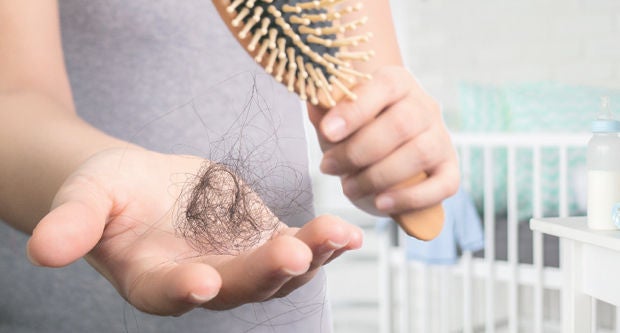SingHealth Institutions will NEVER ask you to transfer money over a call. If in doubt, call the 24/7 ScamShield helpline at 1799, or visit the ScamShield website at www.scamshield.gov.sg.

New mothers who lose excessive amounts of hair usually get back their crowning glory by the time they are celebrating their baby’s first birthday.
New mums may notice that they are losing more hair than normal, with some even detecting bald patches. However, they should not worry: for most, post-pregnancy hair loss is natural and temporary.
Caused by a variety of reasons, including changes in hormonal levels, telogen effluvium or more commonly known as postpartum hair loss affects half of all new mothers.

“Postpartum hair loss is usually self-limiting, and most new mothers will notice complete restoration of normal hair patterns by six to 15 months after birth, back to the pre-pregnancy state,” said Dr Tan Wei Ching, Senior Consultant, Department of Obstetrics and Gynaecology, Singapore General Hospital (SGH).
Hair goes through growth and rest periods. However, after delivery, the woman’s oestrogen hormone levels fall, triggering a lengthening in the resting period. The hair that falls out a few weeks later is noticeable. Instead of the 100 strands that a person typically loses a day, new mothers may find that they can lose as many as 300 strands of hair daily. “The total volume of hair loss probably is not more than what one would have lost over the preceding nine months, but it just feels like a lot more because it’s happening all at once,” said Dr Tan.
Postpartum hair loss, in the absence of other medical causes, is rarely permanent. However, should the hair loss be permanent or the return to normal hair growth be delayed, new mothers are advised to see a doctor to ensure that there are no other underlying conditions, such as severe anaemia or thyroid disorders. People can lose hair for many reasons, and an accurate diagnosis is essential for effective treatment.
Not all mothers will experience postpartum hair loss, while some mothers experience it in one pregnancy but not another. Besides the drop in oestrogen levels, other factors — such as poor health, stress, genetics, diet and medications — can affect hair loss to different extents. “Every ethnicity has different hair types and, hence, different rates of hair loss as reported by various nonmedical resources,” said Dr Tan.
Read more: Losing your hair? Click here for common causes and tips to prevent further hair loss.
To help the restoration process and make postpartum hair loss less noticeable, new mothers should keep their hair healthy by maintaining a well-balanced diet. Postpregnancy, women should be gentle when washing, brushing and styling their hair. They should avoid pulling their hair tight, tying it up, or even using hairdryers, so as not to put extra strain on the scalp. They should also minimise chemical hair treatments, including colouring, perming and straightening.
However, this does not mean that hair grooming should be neglected. “All new mothers can pamper themselves with a haircut to make their hair appear fuller, and help expedite hair regrowth. They can also consider using volumising shampoos and lightweight conditioners to make their hair appear less limp,” said Dr Tan.
Some women may be tempted to take preventive measures during their pregnancy, such as taking prenatal vitamins or health food supplements. “Unfortunately, there is no evidence to show that these measures can prevent or slow postpartum hair loss. But there is no need to despair, as most new mothers notice complete restoration of hair growth by their baby’s first birthday,” she added.
Get the latest updates about Singapore Health in your mailbox! Click here to subscribe.
Keep Healthy With
© 2025 SingHealth Group. All Rights Reserved.



















